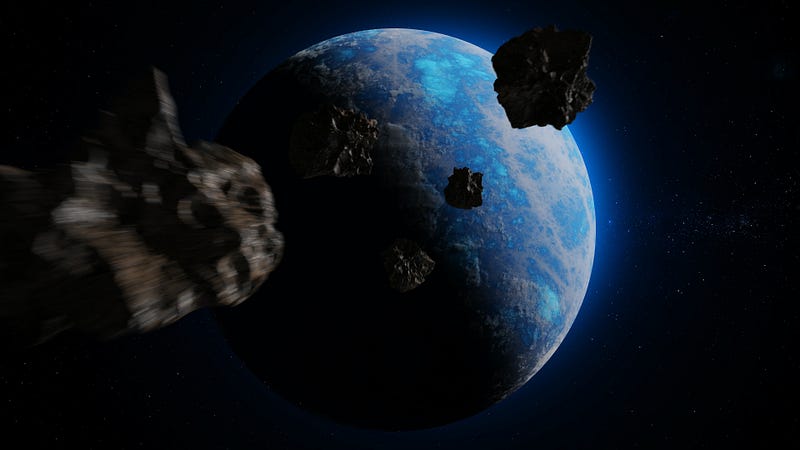# Exploring the Mystery of Interstellar Trash: Are We Alone?
Written on
Chapter 1: The Mysterious Explosion
In January 2014, a significant explosion occurred, yet few were aware of it at the time. This event took place in the remote expanse of the ocean, far from any populated areas, and at an hour when most were asleep. However, military sensors, which constantly monitor activities in the Western Pacific, recorded the incident.
Recent analysis reveals that this explosion occurred at approximately 3 AM on January 9, 2014, at an altitude of 18,000 meters—nearly double the cruising altitude of commercial aircraft. The explosion was detected northeast of Papua New Guinea, originating from a swiftly moving object traveling at about 30 miles per second.
Interestingly, two other similar explosions were reported in January of that year: one over the Indian Ocean and another above northern Australia. These phenomena are not particularly rare, as most result from meteors entering the Earth's atmosphere, igniting, and ultimately exploding upon encountering denser air.
Section 1.1: Avi Loeb's Interest in the Meteor
What sets the January 9th meteor apart is its extraordinary velocity, catching the attention of Harvard astronomer Avi Loeb. In his research, he noted that this meteor was among the fastest ever recorded, suggesting an unusual origin. Loeb postulates that the only plausible explanation for its speed is that it originated from interstellar space.
The U.S. Government later corroborated this theory, revealing that their assessments indicated the meteor had a hyperbolic trajectory, implying it came from outside our solar system. This finding is groundbreaking, as no other meteor has been traced back to such origins.
Subsection 1.1.1: The Search for Fragments
In pursuit of this extraordinary meteor, Loeb organized an expedition to search for its remnants on the ocean floor. He claims to have discovered several small metal spheres, which, if verified, would represent humanity's first interstellar materials.

Loeb's analysis suggests that these metallic fragments possess an unusual composition not found on Earth, Mars, or the Moon. He speculates that the meteor could be debris from a distant planet or perhaps remnants forged in a supernova's intense heat. He has even entertained the possibility of these materials being artificial, hinting at the existence of alien waste drifting through space.
Section 1.2: Skepticism from the Scientific Community
Despite the excitement surrounding these claims, many astronomers have expressed skepticism regarding Loeb's findings. Critics argue that verifying the meteor's interstellar origin is challenging, especially since military agencies have withheld sensor data.
Moreover, the metallic spheres Loeb discovered have raised eyebrows. Professor Steve Desch, as reported in New Scientist, points out that similar spheres can be found scattered across the ocean floor. Without a reliable method to determine their age, it is difficult to confirm if they genuinely originated from the meteor in question.
Chapter 2: The Ongoing Debate
Loeb's assertions are not new; he previously suggested that ‘Oumuamua, the first interstellar comet detected in our solar system, was likely a piece of alien debris. However, the broader astronomical community disagrees, citing a lack of evidence and the existence of simpler explanations for the observations made.
The consensus remains that while Loeb's claims about this interstellar meteorite are intriguing, they are difficult to substantiate. Unless he provides more concrete evidence—he is already planning another expedition to gather additional fragments—his theories about interstellar trash may remain speculative at best.
This article was initially published in The Quantum Cat, my regular newsletter dedicated to space and science topics. For more of my writings, consider subscribing for free today!